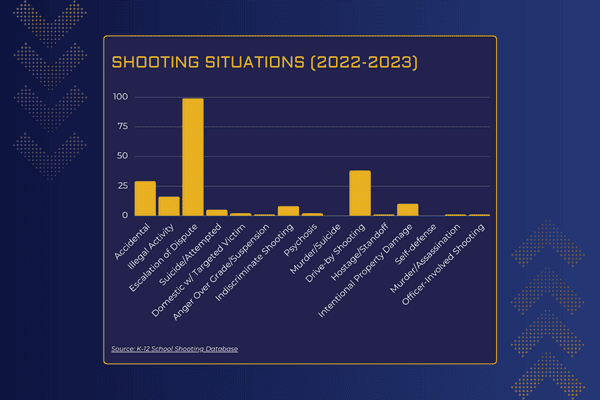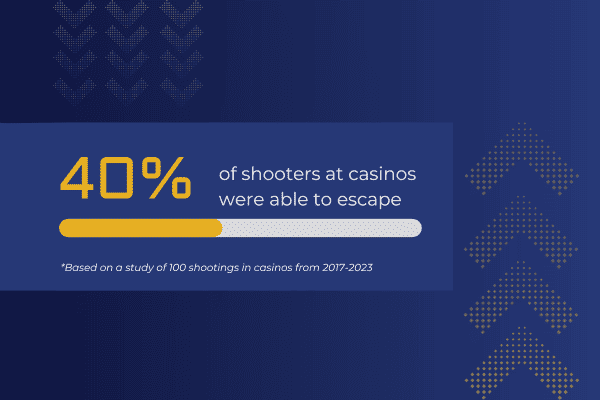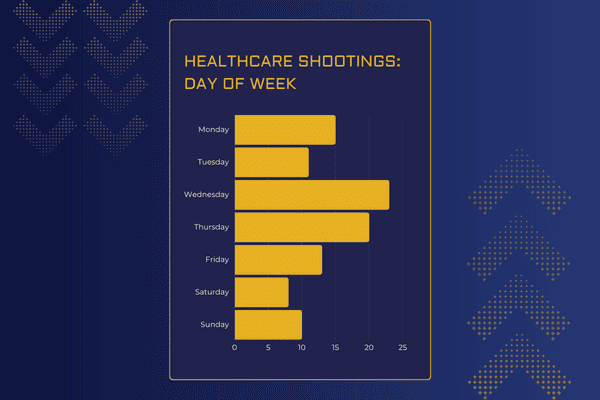After hundreds of hours of research about active shootings across education and commercial industries, the recurring key finding was clear: detection is protection.
What Does “Detection Is Protection” Mean?
Protection via proactive detection is a lot more than a simple alarming system. After all, what good would a gun detection system be if it simply alerted you that a gun is present with no other information?
True protection via gun detection also provides organizations with better situational awareness. That means the precise geolocation of where the gun was last detected, keyframe images of the perpetrator, and more. It also provides organizations with better situational awareness to keep people as safe as possible, all while maintaining critical operations and avoiding risks.
Detection Is Protection Means:
- Knowing where a person branding a gun is on your property
- Alerting first responders and authorities within seconds
- Using that intelligence to help people on the property and in the area
Research Report Highlights
School Key Findings
- The majority of school shootings happen outside of buildings (parking lots, sports fields, etc.) and before or after the school day. School security plans need to account for this.
- While the media would have you believe that most school shootings are indiscriminate and untargeted (like the Sandy Hook, Parkland, or Uvalde shootings), the top reason is “escalation of dispute.”

- In multiple incident reviews, including one analyzing the Michigan State University shooting timeline, it’s clear that an immediate alert paired with situational awareness could have kept people safer.
For more charts like this—plus data and incident reviews—download our research report here.
Third-Party Logistics Key Findings
- Given the tightly-coupled design of logistics networks, an interruption like an active shooting could disrupt business continuity for days, resulting in millions or even billions of dollars in losses. Additionally, an interruption at even one 3PL facility can have cascading impacts across an entire city, region, or even nationwide.
- Most 3PL facilities are large, complex buildings. Without real-time updates of the shooter’s geolocation, it can take hours to safely clear a building and detain the threat.
- A large percentage of shooters at 3PL facilities flee the scene after the shooting. Without accurate information about the shooter’s identification or real-time updates of their last known location on the premises, the shooter could be at large for hours, days, or more.
Interested in knowing what percent of shooters flee the scene? Or the most common cause for shootings at 3PL facilities? Download the report here.
Casinos Key Findings
- Casinos want patrons to stay as long as possible, which means the environment needs to be welcoming and pleasant. Protocols like metal detectors can create a negative experience that deters customers.
- Most casinos are already equipped with security cameras and have strong security teams—however, most security personnel are trained to prioritize threat detection and not gun detection.
- Based on a sample of 100 shootings at casinos between 2017 and 2023, 40% of the time the shooter was able to escape.

- Less than half of the shootings at casinos happened inside the building.
Want more statistics about shootings in the casino and gaming industry? Access our full report here.
Healthcare Key Findings
- Unlike other businesses that can evacuate the building during an active shooting, many patients and staff in healthcare settings cannot. For example, sick patients may be connected to medical equipment, surgeries may be taking place, and staff may be providing life-saving care when shots are fired.
- Since critical tasks cannot be stopped, the faster hospital administration and local law enforcement know the location and identity of the shooter, the faster incident resolution can occur. Hospitals can safely lockdown certain wings so the attacker cannot progress, and critical services can continue.
- Based on a sample of 100 shootings at healthcare facilities between 2018 and 2023, shootings are evenly distributed across all days of the week—meaning that security always needs to be ready.

Want more charts like this? Download our report for the full deep-dive on healthcare shootings that includes charts, data, and incident reviews.
Overall Security Considerations and Key Findings
- Over the last 50 years, installing security camera systems has become a standard practice in nearly every store, office, and public venue. However, it’s nearly impossible for security officers to watch all cameras at all times.
- Regardless of where a shooting occurs, every situation is going to have a better outcome if a shooter who is brandishing a gun is detected immediately, police are notified as quickly as possible, and people know whether they should stay inside or get away from the building.
- Anywhere a mass shooting happens permanently changes the reputation and etches the name of the place into the public consciousness. When the shooting becomes the primary association for a brand, institution, or community, the damage is immeasurable.
- Early, verified detection of illegally-brandished guns—especially when paired with real-time situational awareness—is critical to improving active shooter response and allows organizations to make the safest decision.
Hear From the Experts: On-Demand Webinar
In our Research Report Debrief webinar, a panel of industry experts reviewed key areas of the report and answered audience questions. Our guest speakers included:
- David Riedman, Founder & Independent Researcher, K-12 School Shooting Database
- Myrna Coronado, Senior VP Asset Services, Transwestern
- David Ickes, Head of Security, Johnson Matthey
- Brian Graham, Superintendent, Grand Island Central School District
You can access an on-demand recording of that webinar here.
ZeroEyes AI Gun Detection Explained
Here’s a quick breakdown of how our solution works:
STEP 1: ANALYZE
AI-powered security cameras analyze for visible, illegally brandished guns 24/7/365.
STEP 2: DETECT
When a potential gun is detected, a keyframe image is captured, along with critical details like geolocation.
STEP 3: VERIFY
Keyframe images of potential gun detections are reviewed by highly-trained military and law enforcement veterans at the ZeroEyes Operations Center.
STEP 4: ALERT
Once a threat is verified, a true alert is sent to authorized personnel and local first responders in as fast as 3-5 seconds.
STEP 5: RESPOND
ZeroEyes provides you with real-time, ongoing situational awareness of the threat—including the active shooter’s geolocation, photograph, and direction of travel.

